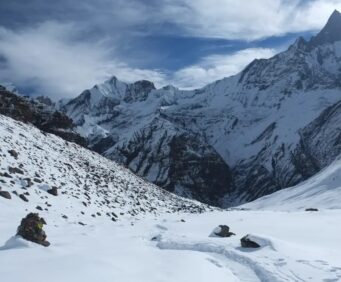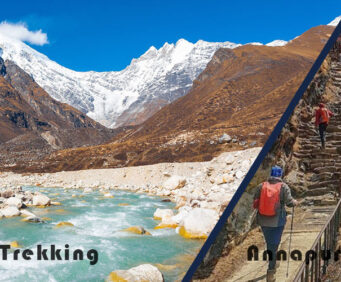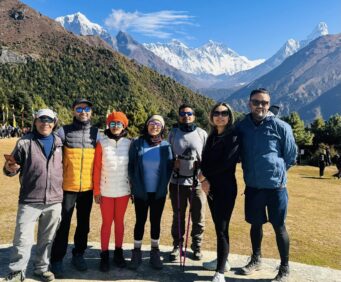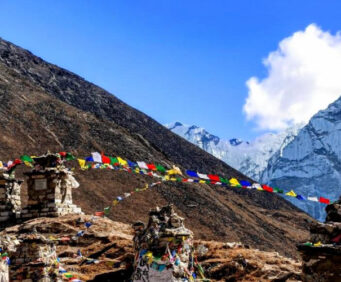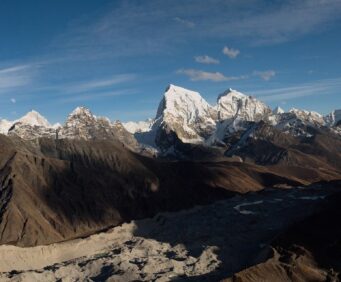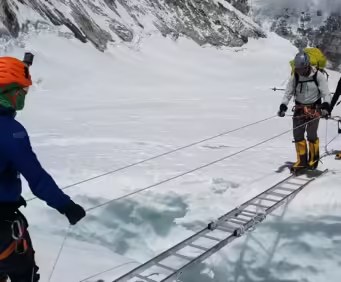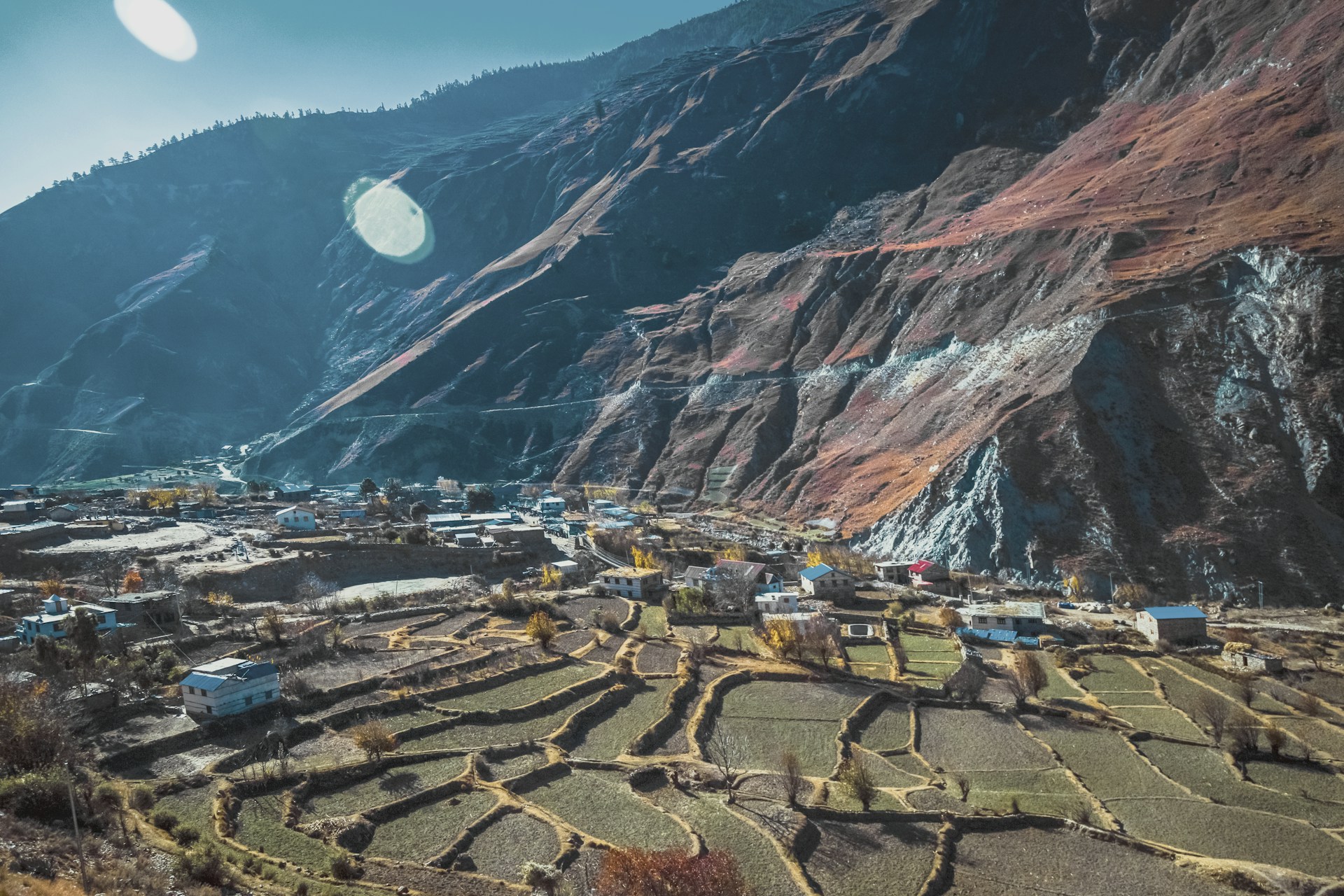
Lower Dolpo Trekking
Overview
Lower Dolpo Trekking is a picturesque stroll among the harmony of the vast culture and customs of the local Dolpo people. You will be in the region of the old Bonpa sect of pre-Buddhism and in the country where elusive snow leopard and blue sheep habitats reside.
Because of its distant location and isolation from Nepal’s major towns, Lower Dolpo, which lies in the country’s extreme northwest, receives minimal exploration and visits from tourists from the West or other countries.
The journey includes breathtaking scenic flights to and from Kathmandu to get to Nepalgunj, a city in the country’s far south, and the highlands of Dolpo region, where our amazing treks take you through Shey-Phoksundo National Park, the country’s largest national park covering 3,555 square kilometers.
Trekkers heading uphill above the Jugdula River valley at Lower Dolpo will encounter a forest of blue pine, spruce, cypress, poplar, deodar, fir, and birch trees, with most of the Quercus species.
Further up, you will pass through two high crossings, Numa-la-pass and Baga-la-pass, which are above 5,100 m. These passes will take you along the Old Trans-Himalaya Salt and Caravan Route, which connects Tibet and Nepal. The route passes through near-desert landscapes with primarily small juniper and caragana shrub species.
What to expect on this trek
You can spot blue sheep and rare, elusive snow leopards during treks. Other frequently encountered wild animals in the area include the Himalayan Thar, Goral, Serow, leopard, wolf, and jackal. Additionally, various birds, including the national bird of Nepal, the Impeyan Pheasant, blood and cheer pheasants, red and yellow-billed cough, raven, jungle crow, snow partridge, and numerous others, can be observed there.
Lower Dolpo Trekking takes you via Jhupal and Dunai, through the towns of Ringmo, Tokyu Gaon, and Tarakot, and into the stunning turquoise-colored Lake Phoksundo within its breathtaking surroundings.
Highlights of Lower Dolpo Trekking
- Travel to Tibet via the Dolpo via the historic Trans-Himalayan Salt Trade and Caravan Trail.
- Expansion of vast Tibetan landscapes to the southwest amid the highest plateau region on Earth.
- Discover the Buddhist and old Bon traditions in the Lower Dolpo settlements.
- Impressive medieval monasteries and settlements offer stunning views of spectacular valleys and mountains.
- Traversing Numa-la Baga-la’s high passes offers breathtaking views of the mountain summits covered in snow.
Itinerary
Day 01Arrival in Kathmandu 1,350 m / 4,430ft and transfer to Hotel
After being greeted by our office personnel and guide upon arrival at the Kathmandu International Airport, you will have a short drive to your hotels located in the center of Kathmandu city. Following your room check-in and refreshments, meet with other group members for a briefing on Lower Dolpo Trekking.
We’ll provide helpful information about treks and other details to make your stay in Nepal enjoyable. The program also includes a welcome dinner at an authentic Nepalese restaurant.
Day 02Sightseeing in Kathmandu
In the morning, check out of the hotel and head to some of the most fascinating locations in Kathmandu, which is home to many temples, monasteries, and other historical and religious buildings that are recognized as World Heritage Sites. Following a fascinating tour, spend the afternoon relaxing and get ready for the Lower Dolpo Trek.
Day 03Fly to Nepalgunj city and transfer to hotel
When the flight to Nepalgunj, which is in the far west of Nepal, is scheduled to depart, proceed to the domestic airport in Kathmandu. After a about 50-minute picturesque flight, arrive at the low-lying warm sections of Nepalgunj City Airport.
From the takeoff in Kathmandu to the landing at Nepalgunj airport, there are amazing views of a panorama of snow-capped mountains. After arriving at the airport terminal, guests are transferred to a lovely hotel located in the city.
Day 04Fly to Jhupal 2,475 m then drive to Dunai 2,140 m - 02 hrs
Early breakfast in the morning before a quick connecting flight to Jhupal, near Dolpo. During this picturesque flight, you’ll see views of Dhaulagiri and other western Himalayan mountains. After 35 to 40 minutes in the air, you’ll arrive at Jhupal, where our team and porters will greet you.
Following a few hours of thrilling jeep travel from Jhupal, you arrive in Dunai, the administrative hub and main town for the entire Dolpa region. Then drive to Dunai.
Day 05Trek to Chhepka (2,838 m) - 06 hrs
After a relaxing night in Dunai, a stroll through the market area and across the Thulo Bheri River bridge leads to a ridgetop climb that offers views of the Kagmara mountain and the Phoksumdo River valley.
From here, the walk descends via farm communities with fields full of walnut trees, approaches the Dhera stream, passes a tiny hamlet of cattle herders, and then climbs briefly to reach Rahagaon village, home of the Hindu Thakuri tribe who live nearby. The hike descends along a route through woodland to our overnight camp, Which is located in the little farming community of Chhepka.
Day 06Trek to Samdua village 2,960m -06 hrs
A morning stroll from Chhepka, which is near Ankhe hamlet, goes to a brief ascent before descending into a wooded region and reaching a river bank. From here, climb after emerging from the forest.
Once you reach the top of a ridge and descend into the forest to cross a tiny bridge at Ryajik village, continue your hike to Samdua, where you can spend the night close to the Phoksumdo National Park entrance.
Day 07Trek to Phoksumdo Lake 3,630 m - 06 hours
After crossing streams and traversing the Pungmo Khola valley, the morning walk goes to Phoksumdo Lake, our first stop. From there, it follows the Pungmo Khola as it descends through pine and birch woods to the upper side of the Khola. Proceed to Ringmo village, an intriguing Tibetan-origin settlement with mud-plastered Chorten and Mani (prayer) walls, after a little rest.
Day 08Rest day at Phoksundo Lake for a local excursion
An ideal location for relaxation and free time, this area offers breathtaking views of the Kagmara peaks and natural surroundings. You can also tour the intriguing Ringmo town and learn about the ancient customs and legacy of the Dolpo people.
Day 09Cross Baga La 5,070m and to Phedi 4,470m - 07 hrs
A morning stroll takes you to the other side of the Dolpo region after a fun and interesting rest stop at Ringmo village and the area surrounding Phoksundo Lake. We follow a nice trail that climbs steeply to cross Baga-la at 5,070 meters as our route heads east across a few passes.
A few hours of tough climbing will reward you with a breathtaking view of Phoksumdo Lake and the Kagmara Peaks. A beautiful halt walk will then lead to a lengthy descent to the overnight camp at Phedi (the foot of the hill).
Day 10Cross Numa-la 5,190 m and to walk to other Phedi - 08 hrs
From here morning walk leads to another pass at Numa-la at above 5,190 meters, the highest point of the adventure, The walk leads to a climb on nice grassy slopes for about three hours and then reaching on top of Numa-la, facing grand views of snow-capped mountains from Dhaulagiri mountain range to Kagmara peak and looking down at beautiful valleys with dramatic landscapes. After an enjoyable stop descend to the base of the Pass, with a gradual path to reach our overnight camp around Yak summer pasture.
Day 11Trek to Tokyu Gaon 4,200m via Jeng la 5,090 m - 06 hrs
Following a few days of total seclusion from villages, today’s walk leads to the fascinating village of Tokyu-Gaon, one of the largest villages in Inner Dolpo. The morning begins with a strenuous two-hour climb to the summit of Jeng-la, offering breathtaking views of snow-capped mountains and Mt. Dhaulagiri North Face.
After savoring the breathtaking views, descend towards Tarap Valley, one of the longest, most beautiful green valleys, extending approximately 20 km along the Tarap Chu River. It is home to over ten villages, monasteries, and Chorten.
Day 12Trek to Dho Tarap 3, 944 m- 05 hrs
After Tokyu Gaon, the morning starts downhill to Tarap Chu on the wider green valley, one of the scenic broader valleys of the area, here you will notice many Sheppard’s settlements of Yaks and Sheepthe, as the walk continues to our overnight camp at Dho Tarap, another interesting village of mix tribes of Tibetans origin and Magar hill tribe people.
Day 13Trek to Ghymagar 3,759 m - 07 hrs
From here, there is a long descent to Tarap Valley, one of the largest and longest valleys in the Dolpo area. It stretches for about 20 km, following the Tarap Chu River of the way before joining the Thuli Bheri River near Tarakot village.
The walk passes through Langa, which has beautiful waterfalls, and heads due south, following the trail that leads past Sisaul and a small village called Kesila around the temporary camps of Yak herders. This leads to our overnight camp, which is located at Ghymagar.
Day 14Trek to Tarap Khola 3,652 via Chhyugar 3,440 m - 06 hours
Today’s treks along the lovely Tarap Valley will take you past Toltol, which has a massive overhanging cave. En route, you may spot some wild life, including blue sheep and naur.
The track also enters a small gorge with some juniper and wild rose bushes. After a strenuous six-hour day of walking, camp along the river as the walk approaches the confluence of the Tarap Chu and Lang Khola rivers.
Day 15Trek to Tarakot 2,540 m - 06 hrs
The morning walk starts past smaller villages and then enters into a small forest area, following a river to Tarakot, which is one of the important and large villages of Dolpo with an interesting history and houses an old historical fortress (Dzong or Kot) to guard the village from outsiders in early days.
Tarakot village with famous old Sandul Gomba located at the junction of Barbung Khola and Tarap Chu River where our overnight camp is set.
Day 16Trek to Dunai - 05 hrs then drive to Jhupal - 02 hrs jeep ride
Following an amazing experience in Tarakot, we hike for a short bit on our final day and then travel to Jhupal to catch our aircraft back to Kathmandu.
Walking through dispersed settlements and farmhouses in the morning, one follows a broader trail with brief ups and downs to arrive at the Thuli Bheri River valley and, finally, Dunai. Lunch is served in Dunai. After this, jeeps return to Jhupal so we can catch the following morning flight to Nepalgunj and Kathmandu.
Day 17Fly back to Kathmandu via Nepalgunj and transfer to the hotel
Arrive at Jhupal in the morning, then head to its tiny airstrip for a quick, picturesque flight that lands at Nepalgunj airport. Spend some time here being refreshed before boarding a subsequent aircraft that returns to Kathmandu. After arriving in Kathmandu, proceed to your various accommodations and enjoy the afternoon free for your own pursuits.
Day 18Final Departure from Nepal
On your final day in Nepal, the land of Himalayan marvels, travel to home or your next connecting location according to the time of your international departure.
Not satisfied with this itinerary?
Are you interested in planning a customized trip that suits you?
Useful Info
Best Time for Lower Dolpo Trekking
The best time for Lower Dolpo Trekking is during the Spring (March to May) and Autumn (September to November) seasons. These seasons offer favorable weather conditions and clearer views of the stunning landscapes in the region.
Accommodation at the Trek
The Lower Dolpo Trekking Trail offers very modest and uncomplicated accommodations. On the trekking trail, the most popular types of lodging are teahouses and basic lodges. These modest guesthouses, which are owned and operated by local families, provide basic facilities in simple rooms. Typically, the rooms feature twin beds, communal restrooms, and dining areas where you can eat breakfast, lunch, and dinner.
Preparation for the trek
In Nepal’s Dolpo Region, trekking in the Lower Dolpo is a demanding and rewarding experience. It needs to be properly prepared for your enjoyment and safety. These actions will assist you in getting ready: Long walks across rough terrain at high heights are required in Lower Dolpo. To increase your strength, flexibility, and cardiovascular endurance, start with a regular workout regimen. To replicate the conditions of trekking, concentrate on exercises like walking, running, cycling, stair climbing, or hiking.
Travel Insurance
It is both required and advised to get travel insurance for Lower Dolpo Trekking since it offers peace of mind and financial security while traveling. Travel insurance helps reduce the risks and difficulties associated with trekking in isolated regions like Lower Dolpo. Medical costs may be covered by travel insurance if you get sick or hurt while hiking.
This covers the price of being admitted to the hospital, prescription drugs, medical consultations, and if needed, emergency medical evacuations. There aren’t many medical facilities in isolated places, therefore in severe situations, evacuation to a more sophisticated institution might be necessary.
FAQs
How is the terrain for walks and treks?
The majority of the Himalayan mountainous region has a lot of ups and downs, with gradual winding trails that alternate between wide and narrow paths on rocky, muddy, and sometimes minimum altitudes of 2,500 meters and 5,190 meters while traversing the Numa-la and Baga-la passes.

